Japanese Flowering Cherry
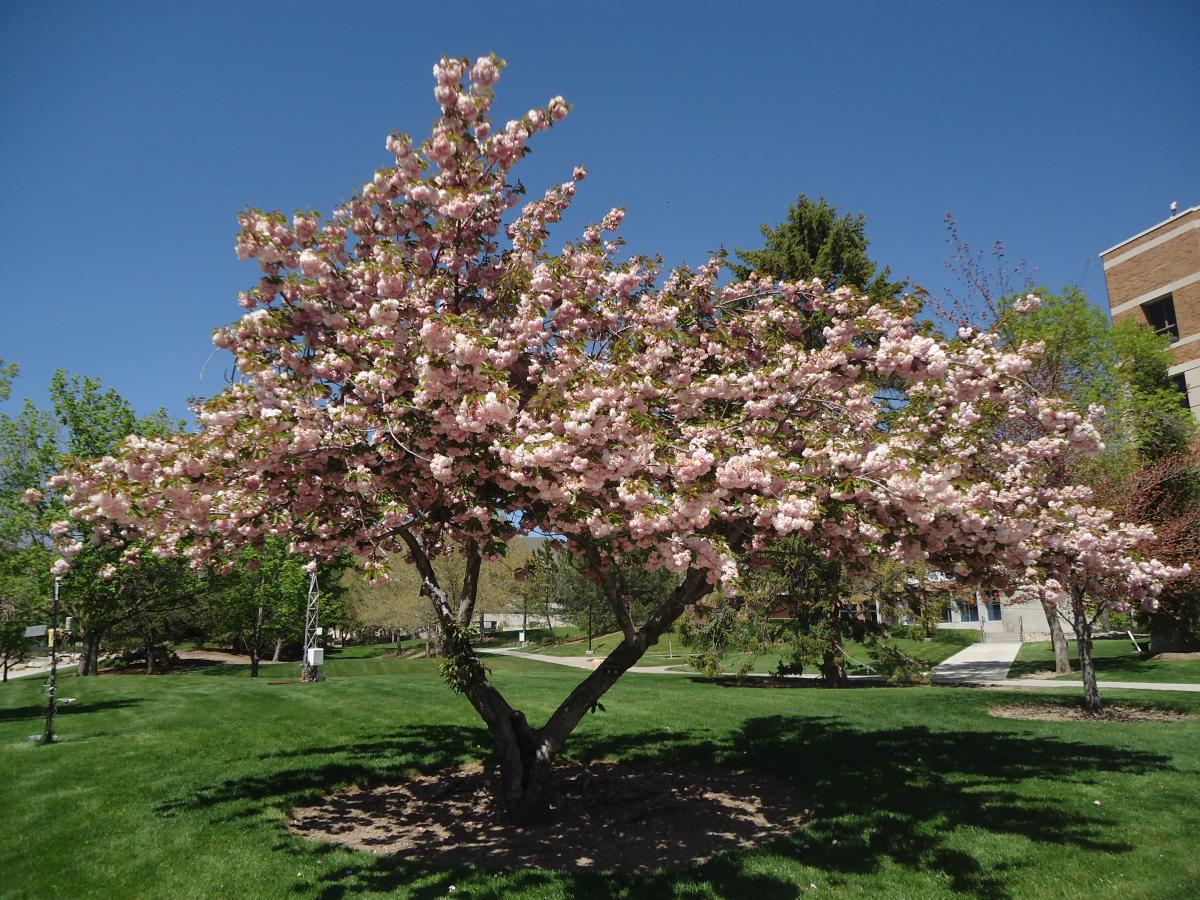
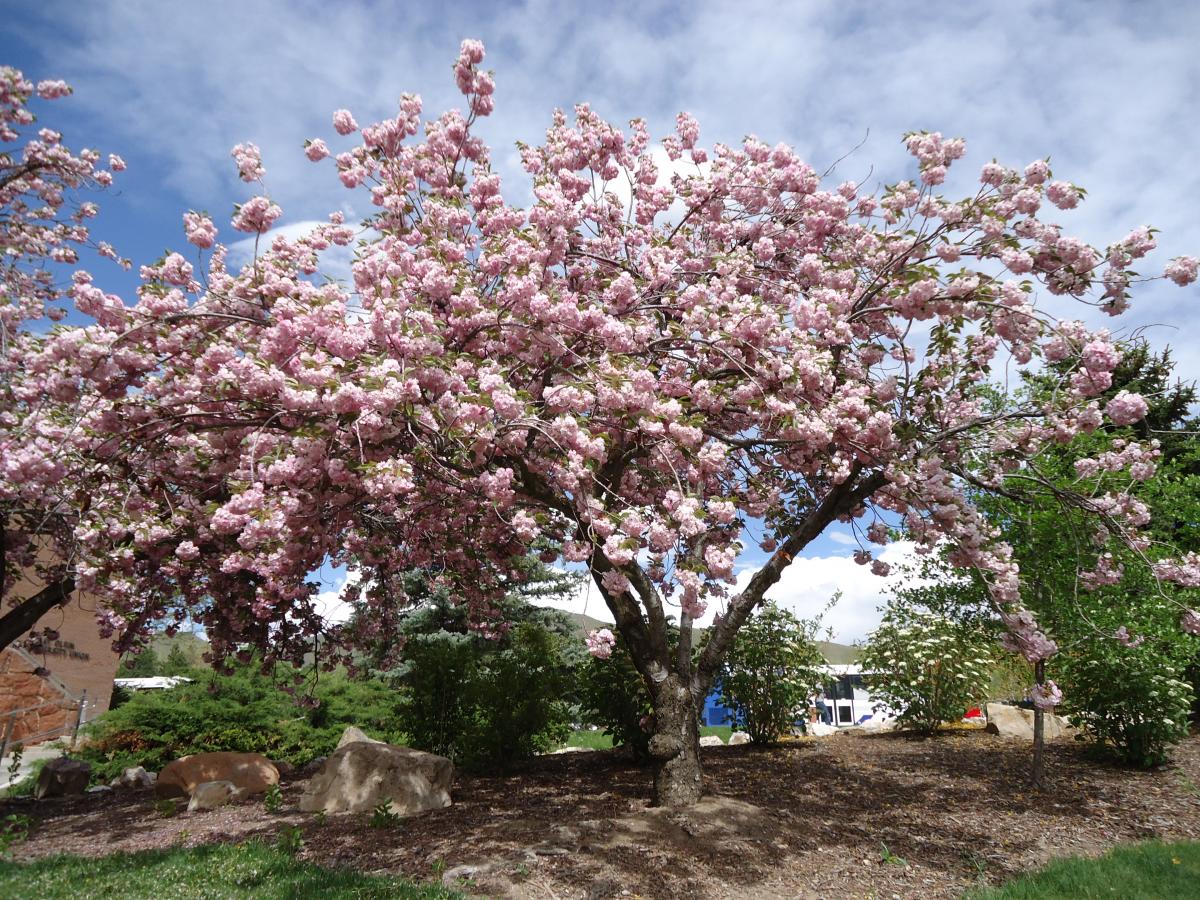
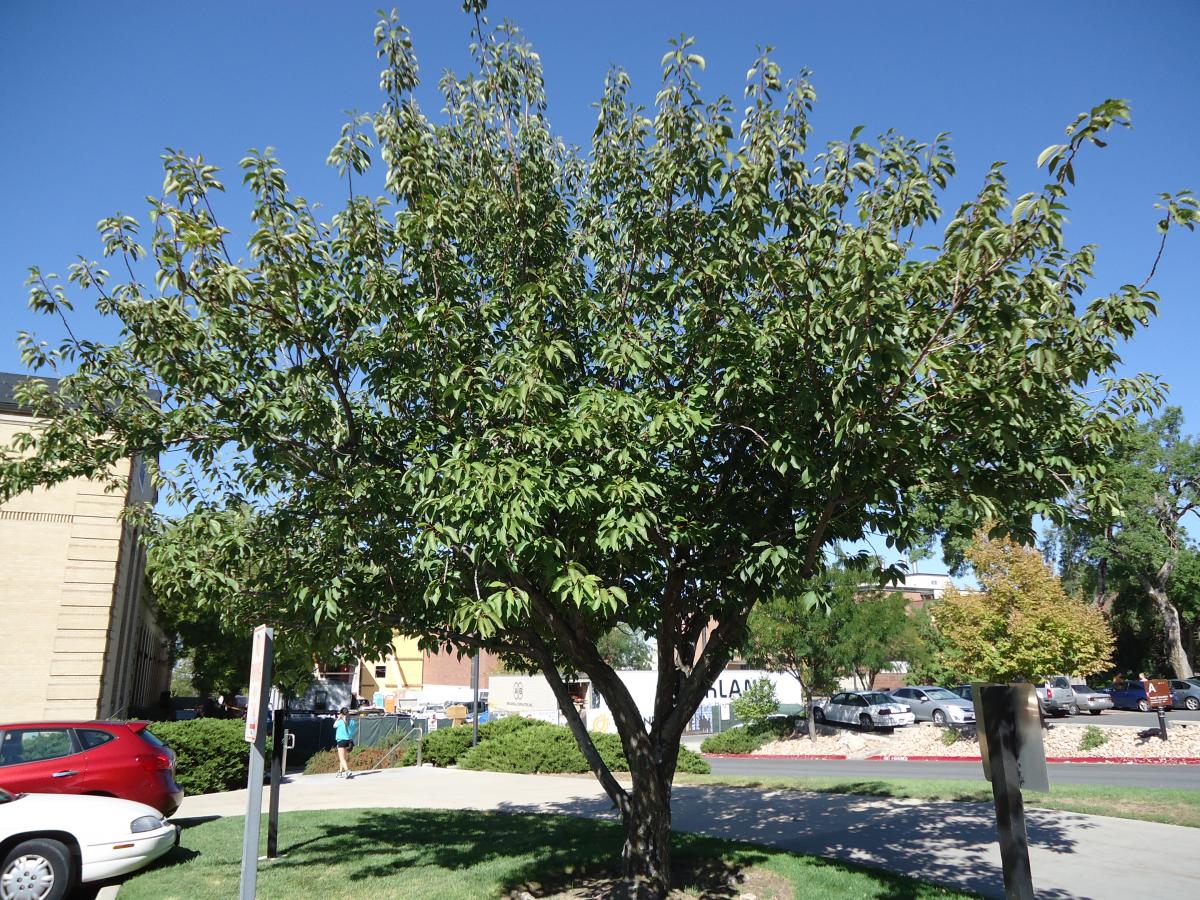
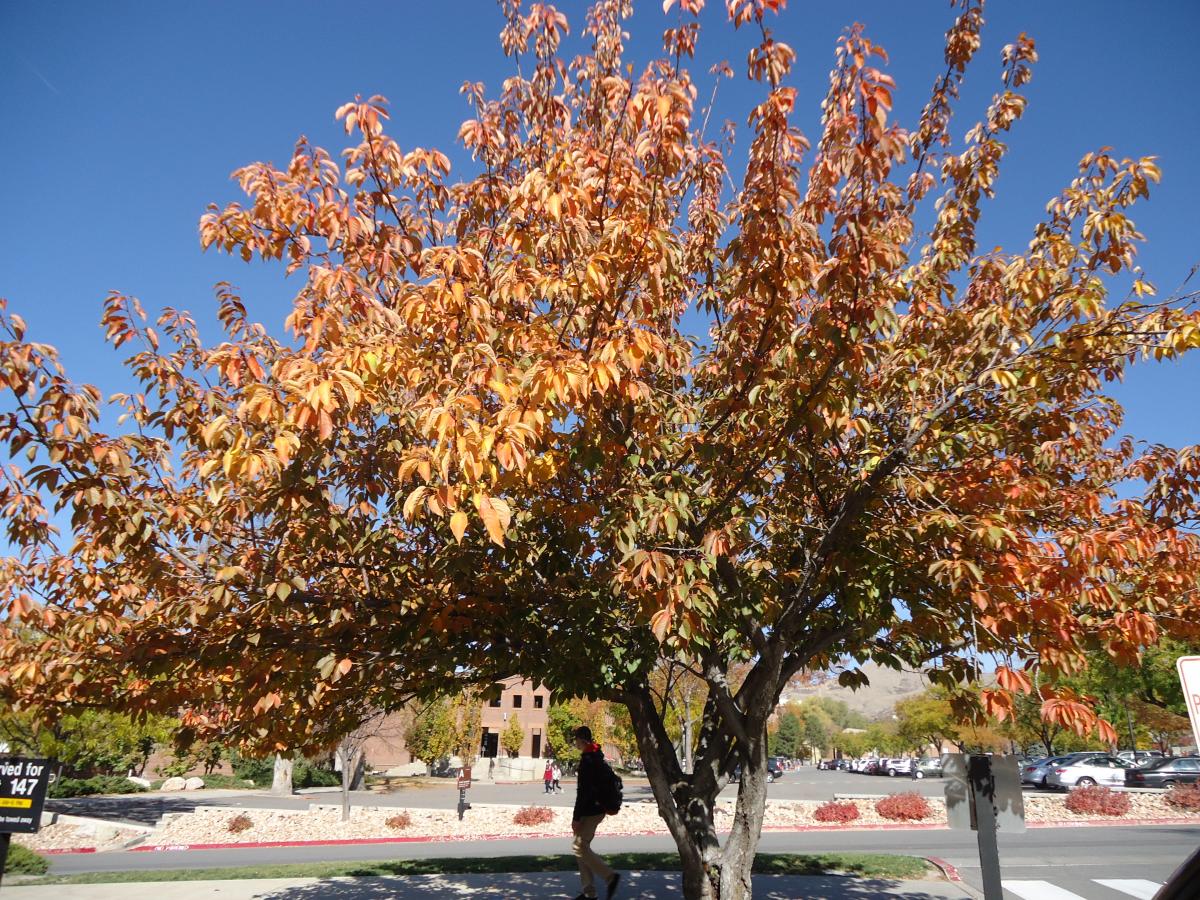
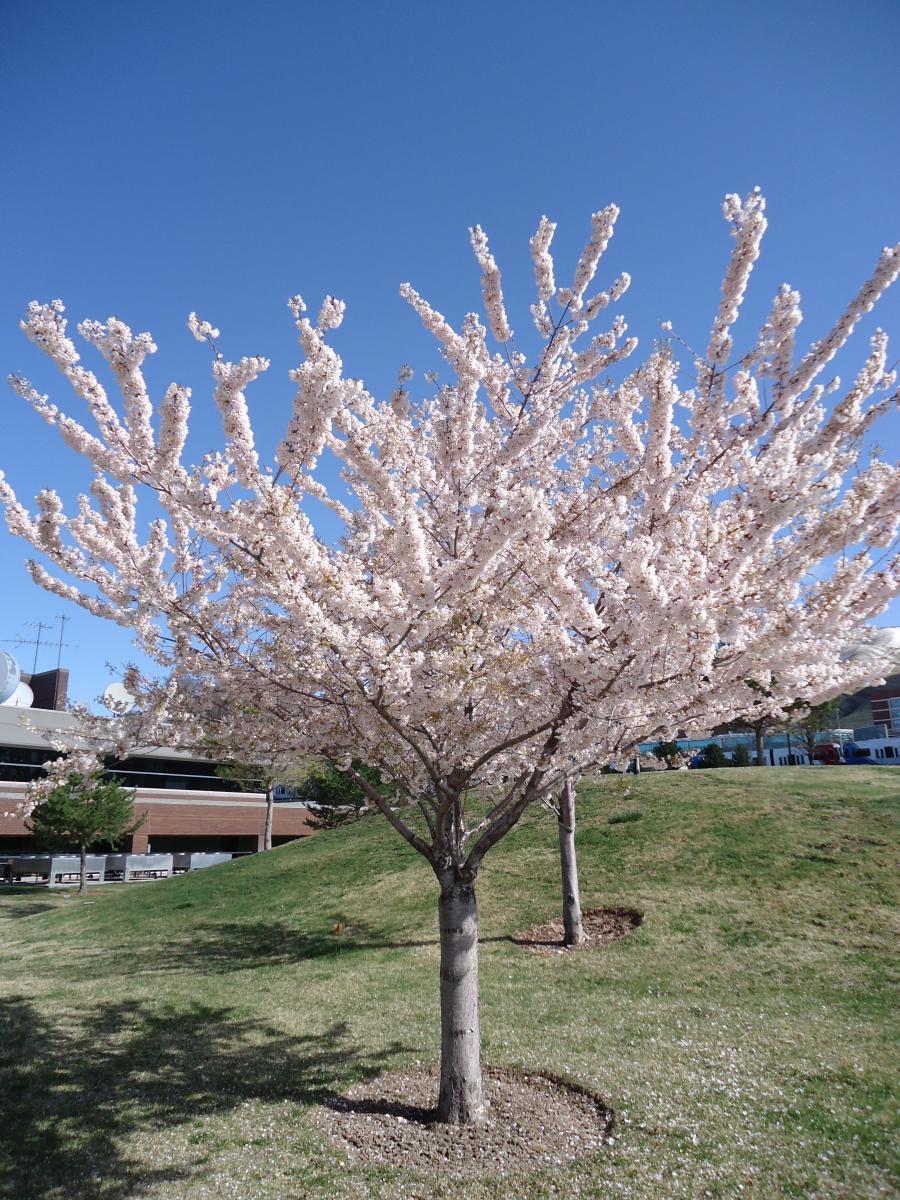
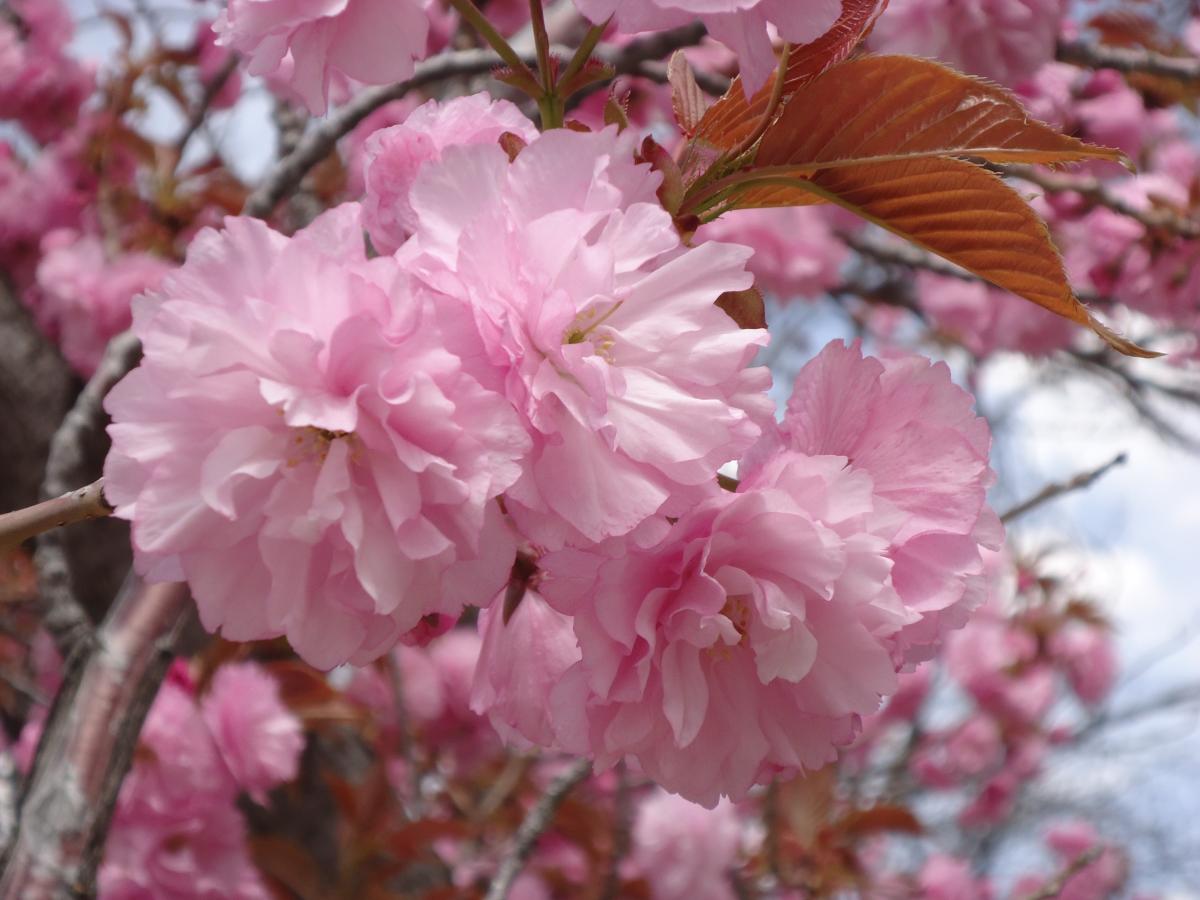
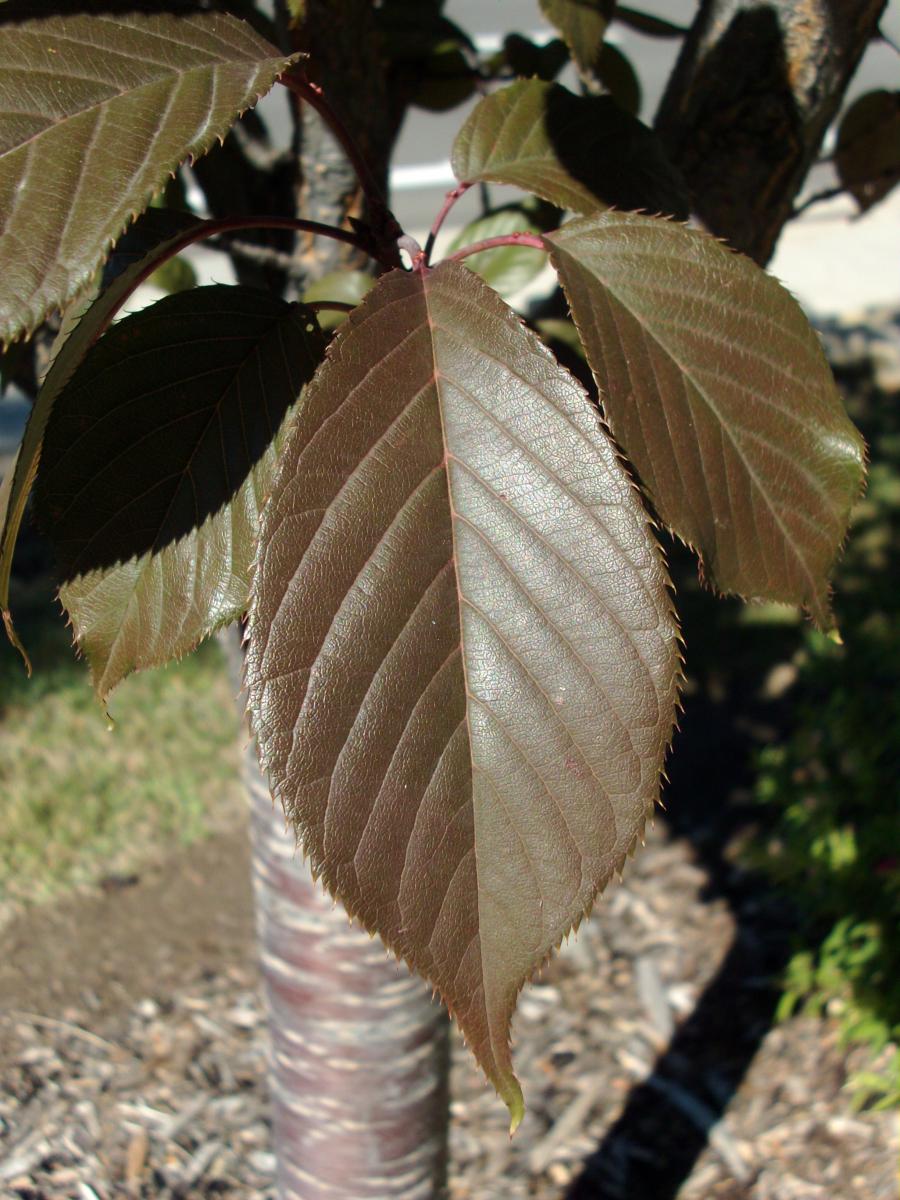
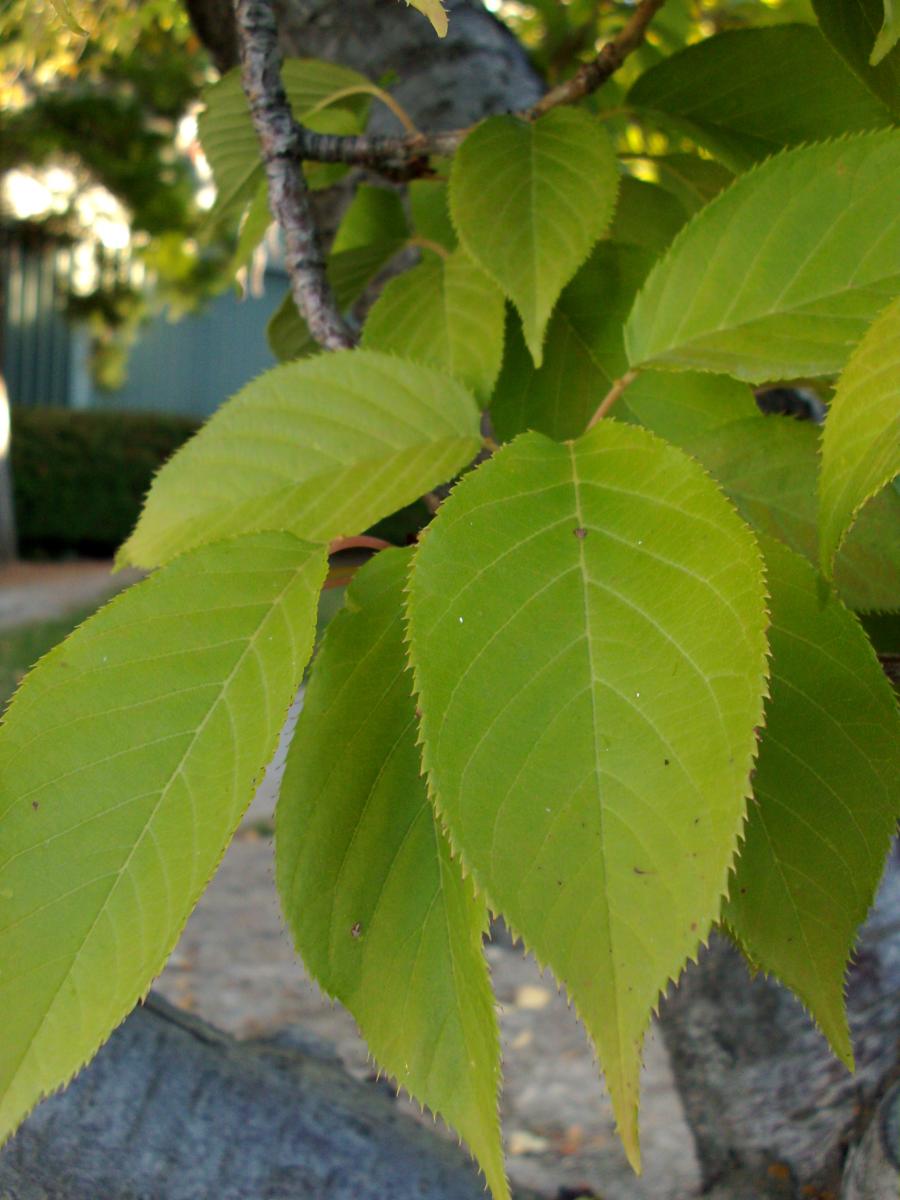
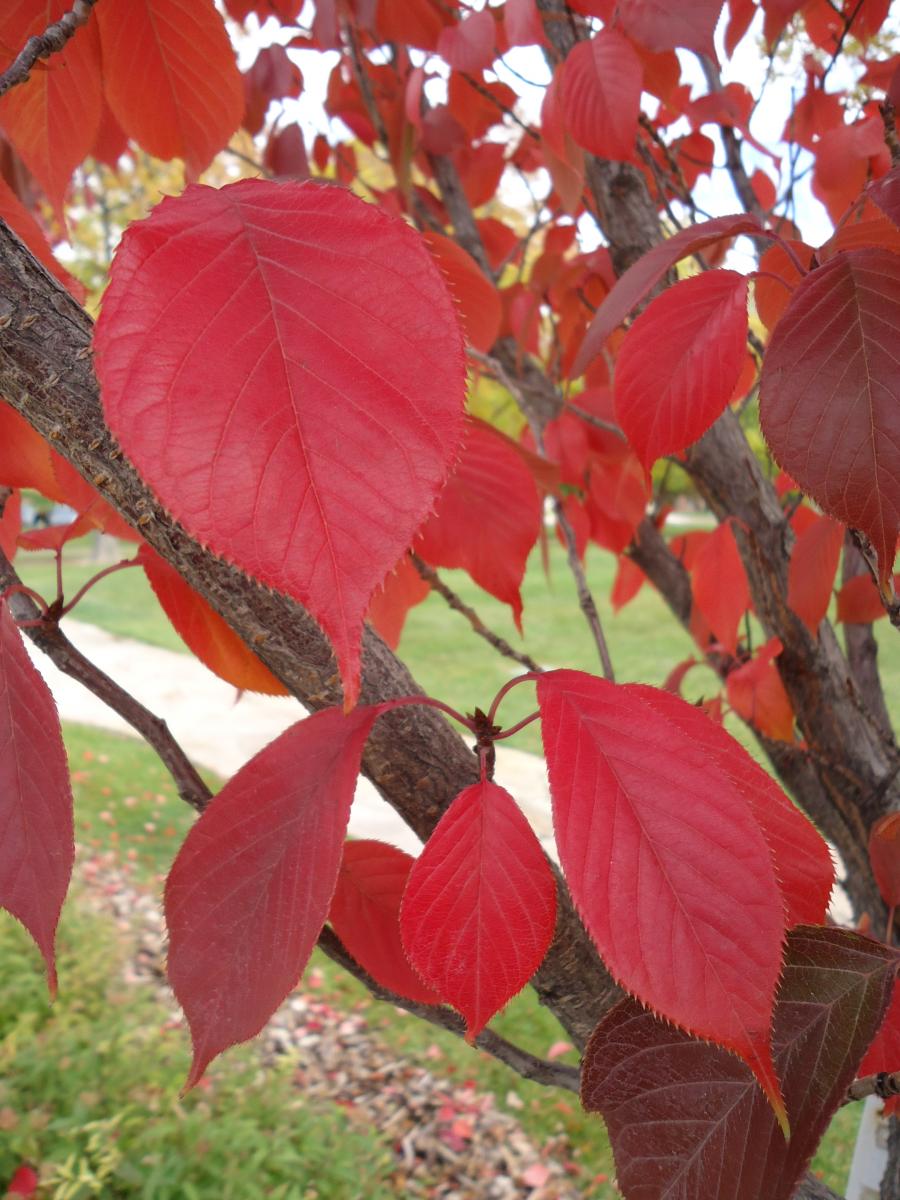
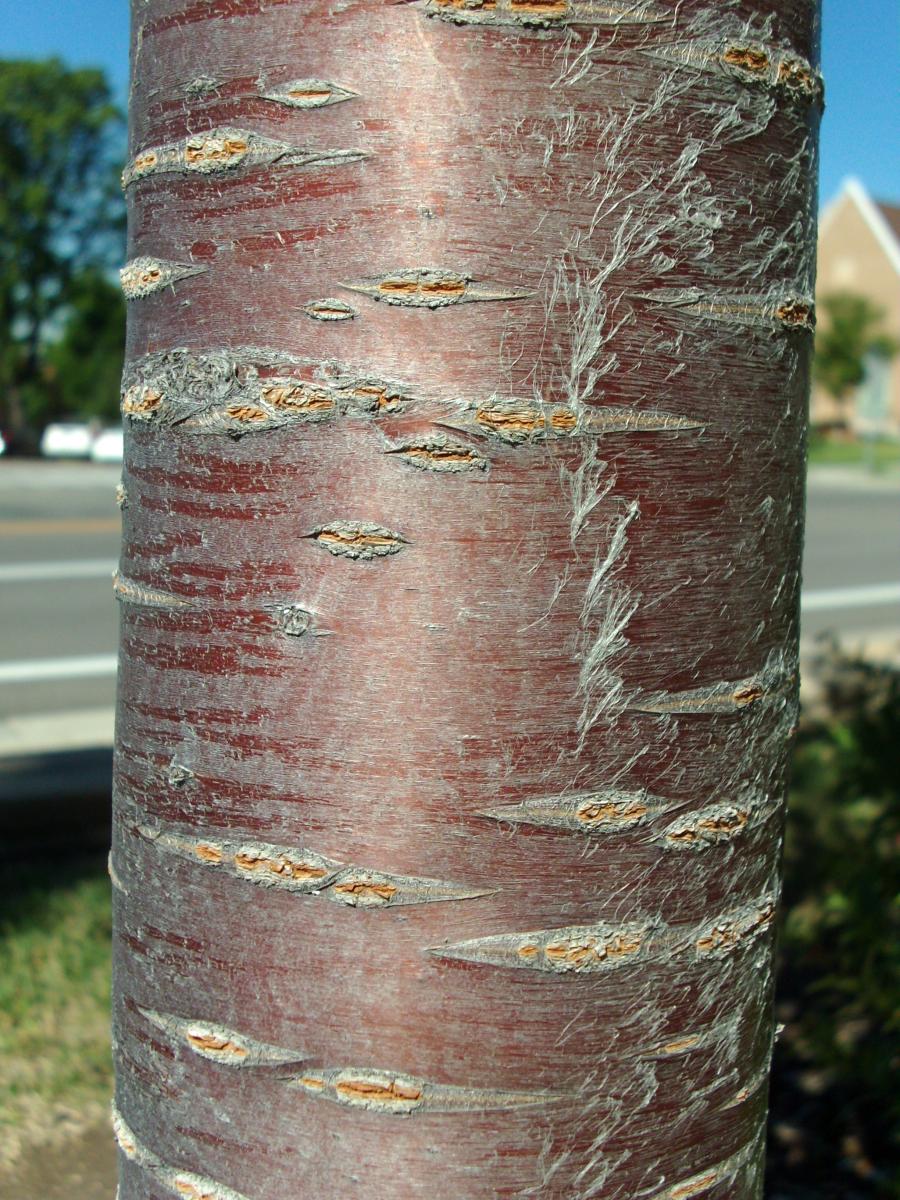
Prunus serrulata
Leaves: Deciduous. Leaves are 2 to 5 inch long, 1½ to 2½ inches wide, with an elongated oval shape and a long pointed tip. Leaves have edges that are finely serrated and each serration ends in a long, thin point. Leaves emerge as a reddish-brown or bronze color before turning deep green during the summer. Fall color is bronze to red.
Bark/Twigs: Bark is shiny and smooth with a reddish-brown color with white horizontal dots called lenticels. Bark peels horizontally.
Flowers/Fruit: ½ to 2 inch pink flowers. Flowers vary from light pink almost white, to dark pink depending on the variety. They can have single or double flowers in small clusters in late spring (April-May) as leaves form. Tree is fruitless.
Mature size and shape: Small to medium. 20 to 25 feet high x 10 feet wide. May reach 30 to 40 feet high if not a dwarf variety, but generally smaller. Spreading vase-shaped to rounded.
General information/special features: Plant in full sun to part shade. Moist, well-drained soil preferred. Often grafted on sweet cherry rootstock standard at 4 to 6 feet. Wood is used for smoke-dying ham and bacon. Often short lived due to several pests and diseases. Sakura, or cherry blossoms, are one of the enduring symbols of Japan. Annual cherry blossom festivals (hanami) are one of the important customs and are known worldwide.
Landscape use and maintenance: Beautiful ornamental tree for streets, parks, or residences. Slow to medium growing rate. Average maintenance. 'Kwanzan' is a popular variety famous for its spring display in Washington D.C. with 2 inch dark pink, double flowers.
USDA Hardiness Zone: 5 to 8
Family/Origin: Rosaceae – Rose. Native to China, Japan, and Korea.
Campus Use: Common. Can be found on the west side of Civil & Materials Engineering (Bld 56) or northeast of HPER North (Bld 92).
